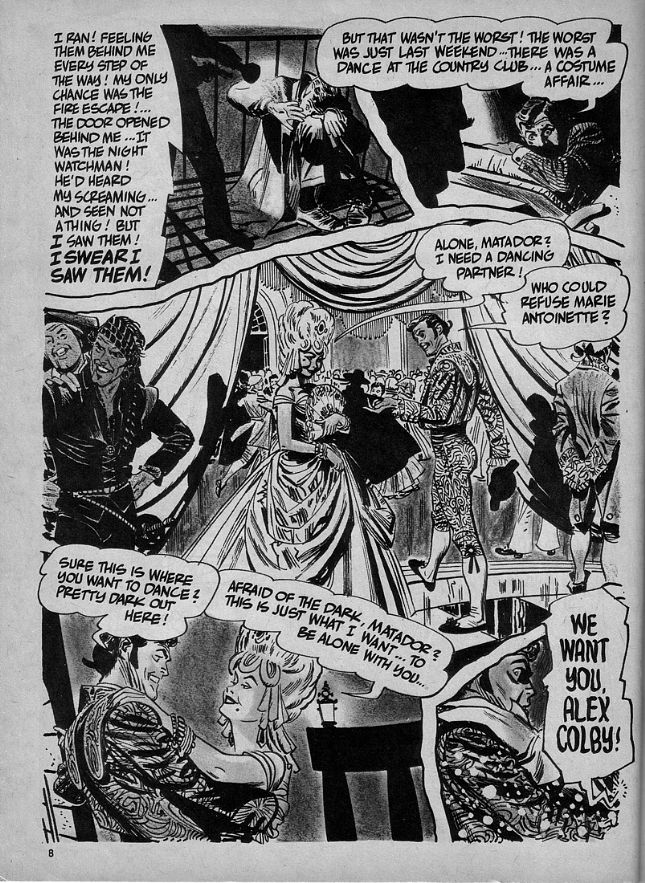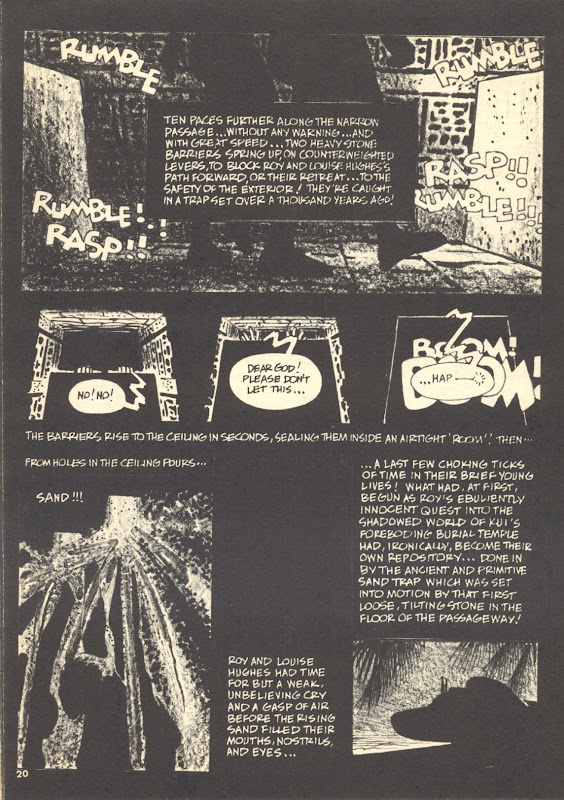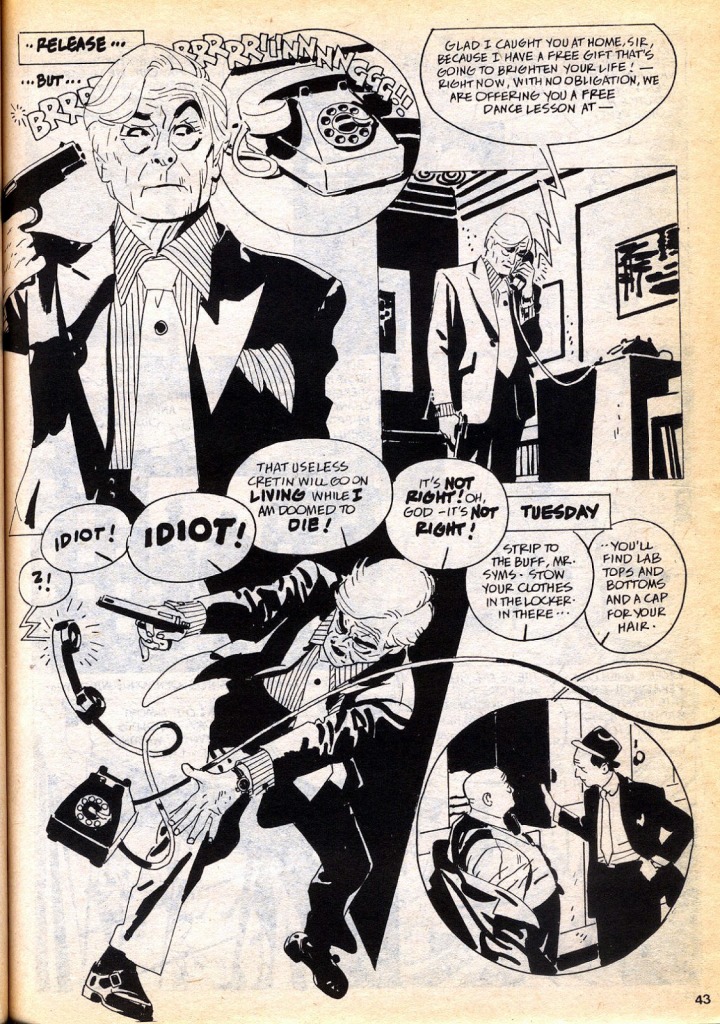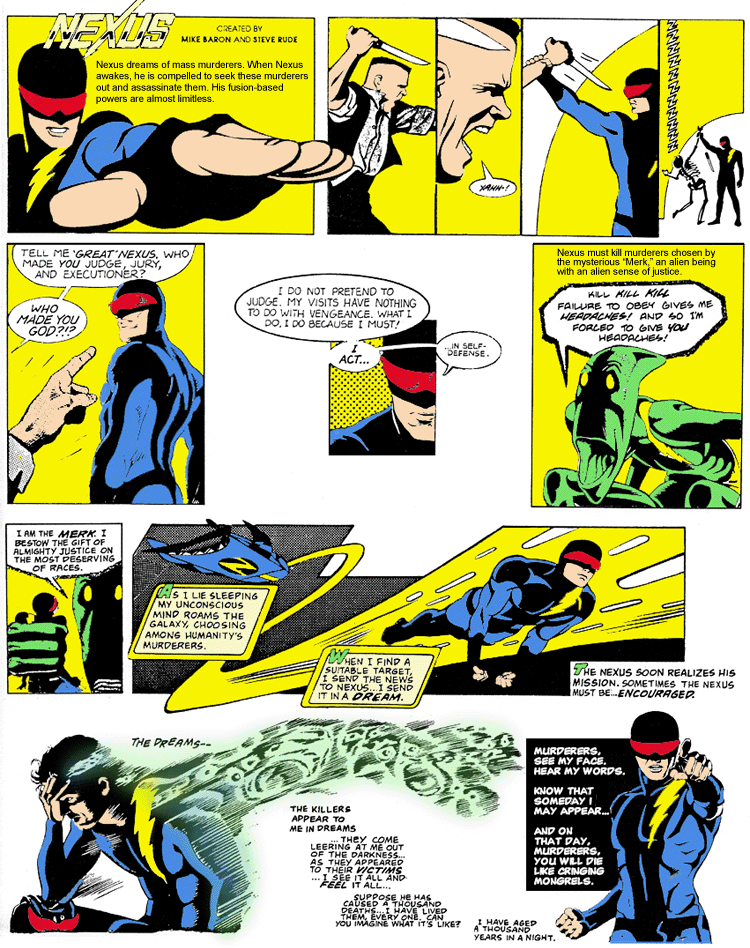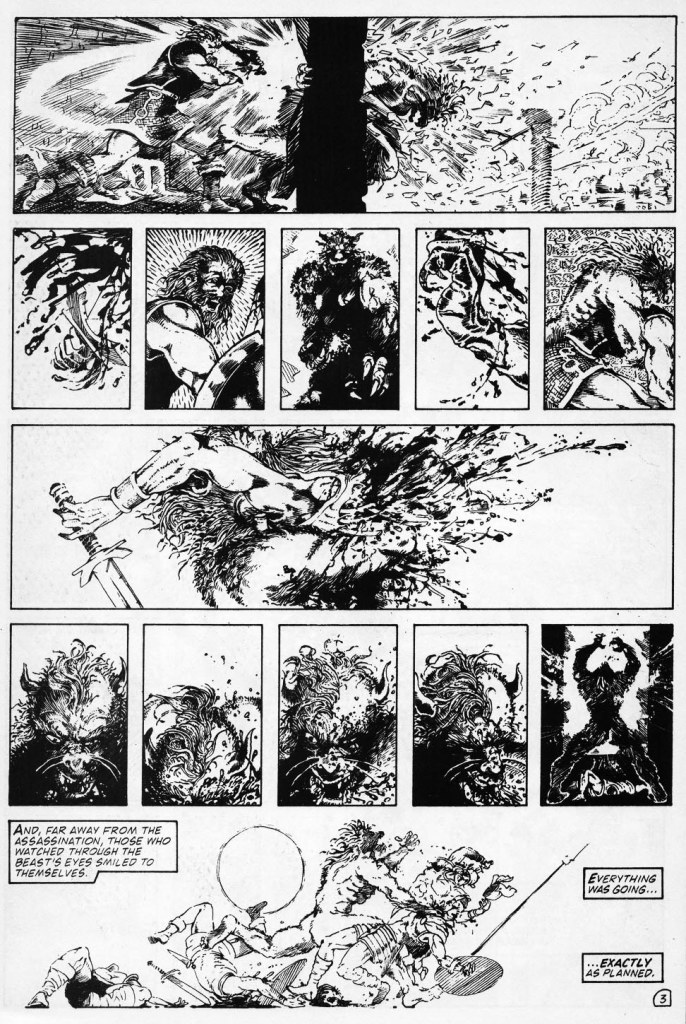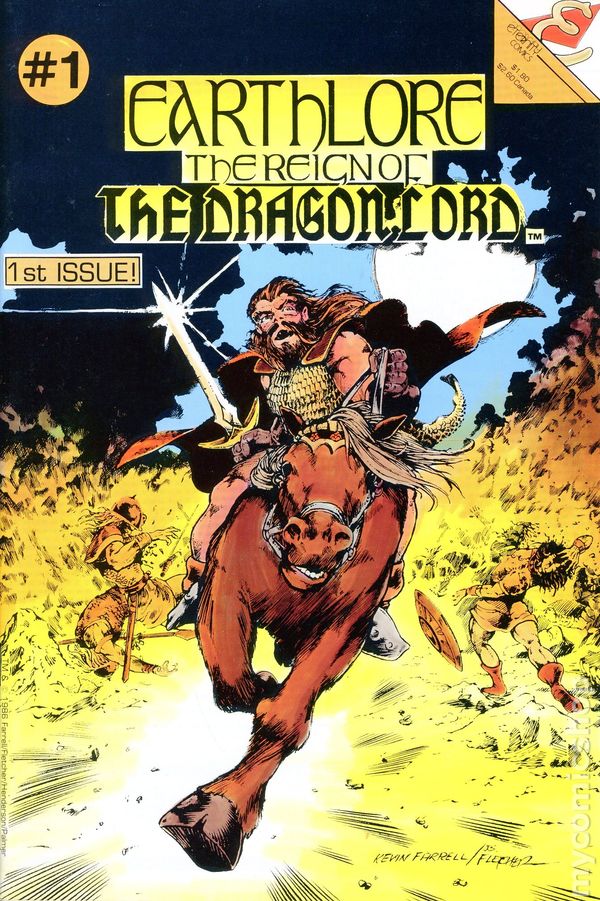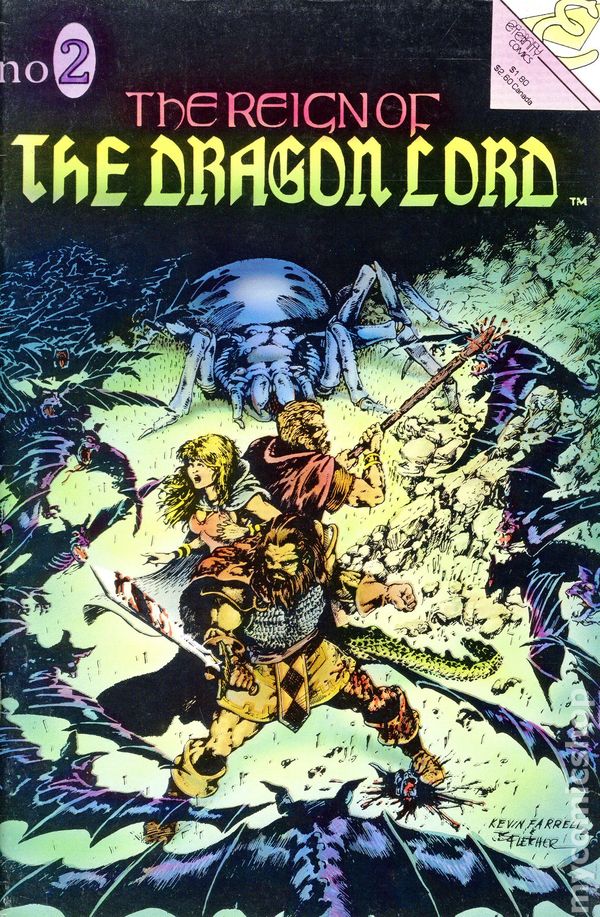Creepy Presents: Alex Toth
by Rey ArmenterosAs a seasoned artist, I look at Alex Toth’s work and I am inevitably delighted. I have sat in awe of a story of no consequence of nothing more than a handful of pages because it was drawn by Toth, and it would be like no other – the compositions, the flow from panel to panel, the well-formed figures, the abstracted simplicity, and the way he put all this together. It was my idea, along with that of countless others, that Toth could not disappoint.
Creepy Presents: Alex Toth was a book I had to have and it is a book I will keep, even if it has the distinction of being the least impressive of Toth’s work. From the start, the drawings feel flimsier than anything else he’s done. As I was trying to understand why I felt this way, I found clues in the gray tones. He seems to struggle with the tones; it feels like he’s filling things in. I wasn’t sure. I kept looking into it. How was this possible?
The fundamental problem, as I gathered it, was that Toth was strongest in pure black and white, without tones, unless the tones were clean or mechanically placed. That simplicity he thrived on was sheer magic when he was in complete control of the art, including the lettering. All the work in this book is also without color, but the gray tones muddy that crisp clarity he brought into his simple, albeit sophisticated, forms. Either ink wash or pencil or gray marker (I can’t tell which), the techniques used here form a veneer of possibilities, yet they never go far enough. There are never more than one or two shades of gray, almost no textural differentiation, and the worst: the grays did nothing to heighten the forms or do anything else for that matter. It was grainy in parts, washed out in others, dark and opaque in still others. It felt as if he were rushed. The signature Toth drawing was there, but the forms were often faded by haphazard scumbles – obscured – undermining the clarity he looked for.
What was the problem here? Was it the printing limitations of the original Warren magazines? No, not at all. Toth contemporaries working with the same array of tones produced many levels above this, using a rich range of grays, employing patterns to great effect, playing with lighting to direct the eye; just look at what Steve Ditko was doing at the same time for the same publications.
The stories in which the gray tones work best still come across as sketchy; I am thinking of “Survival,” where you can find backgrounds obviously influenced by Milton Caniff, one of Toth’s inspirations. The grays enhance here and there but feel almost like surplus work. In “Proof Positive,” you get an inkling of more effective grays, but they’re still too blurry (perhaps done purposefully to satisfy the theme of photography in this story). At other times, like in the “Hacker” stories, the more concrete shades look divorced from the line work; it reminded me of talented student work. It makes me wonder if Alex Toth was in over his head with these techniques. Perhaps here was an area of drawing that the master himself had not yet mastered. Or maybe he rendered them too quickly; I found signs that betray that he tossed some of these tones together. (If you look at the page illustrated above, you’ll find a halo around every form in Panel Four, the kind of shortcut for which I reprimand my lazier students.) Unsurprisingly, the story with the strongest mark of Toth on it is one of the few without tones, titled “The Reaper.”
So, yes, the art did disappoint. But then again, we’re talking about expectations set by Toth himself. The book does not deliver because even when you scrutinize the panels and find that the foundational drawing is there, the results themselves – as a whole – fall apart.
And the stories certainly don’t help. Most of them are scripted by Archie Goodwin, whose tales may start with a bit of snap or a strong mood, but continue with verbosity that does not read well today, and always end stale with contrived shock endings. The one exception is “The Reaper,” which had a nice rhythm to it that was in precise harmony with Toth’s panels. The stories by other writers run the same course, and word balloons pile on top of each other holding superfluous text, blotting out the art, tearing the reader’s attention from the what’s going on in the panels.
What was exciting for me about this book was the presence of four of Toth’s very own stories. One of Toth’s aspirations was that of doing his own scripting, of which he had few opportunities in his career. This book has four stories that fall completely under his creative control, from writing and lettering to penciling and inking. The stories are more of the same Twilight Zone fluff that for some reason necessitated a surprise in the end, but they are noteworthy because they are better than most of the others in the collection, and here the artist is the complete author of his work.
The book also includes several stories in which Toth is inking over somebody else’s pencils, and I was least interested in these pages. With the exception of a panel here and there, there was little Toth to be found in them.
Ultimately, am I keeping the book? I have already said I would. Even with all the blemishes, there is still enough good quality inside, especially in the great storytelling techniques. I am thinking of stories like “Kui” (scripted by Toth), which showcases closeups of vegetation and temple walls – essentially abstract panels – heightening the sense of claustrophobia by limiting perspective (regardless if it were spotted with more of that ambiguous shading). I am also thinking of “Survival,” which is simply beautiful, even with that ridiculous surprise ending. Though not Toth’s greatest work, this collection still offers his brand of craft. Toth’s flawed work can still inspire awe.

